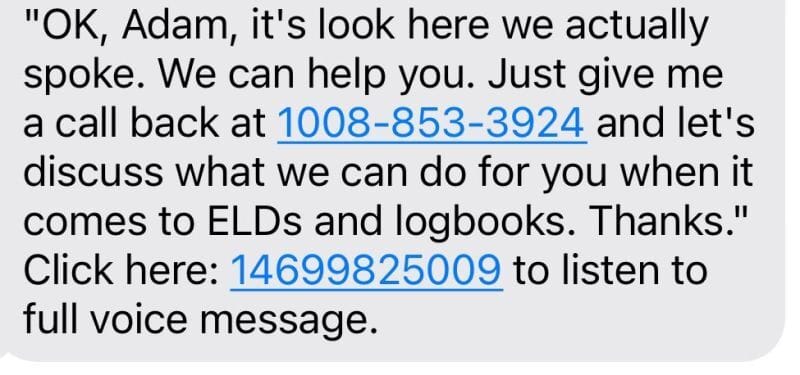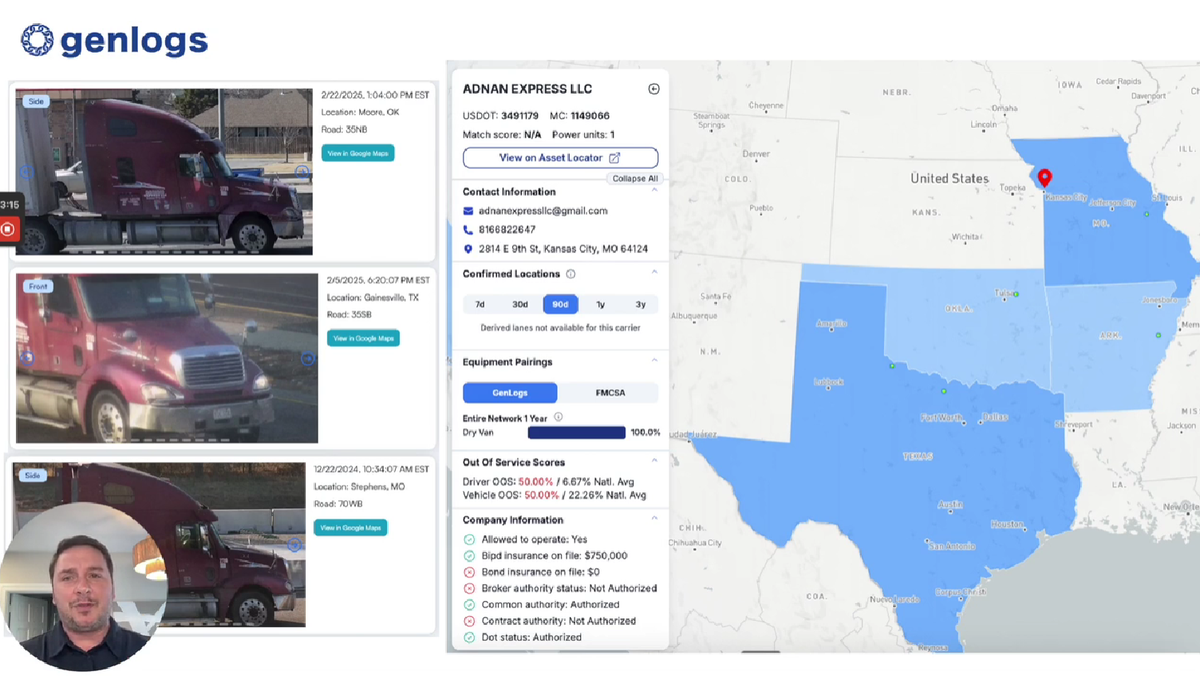🎣 Scaling Smart with David Radom
"There’s never been a better time to be a broker than right now."
When ELD tampering and GPS spoofing go unchecked, gaps in trailer visibility open the door to cargo theft. Here’s how GenLogs is using visual intelligence to close that gap.

In theory, Electronic Logging Devices (ELDs) and GPS signals are a freight broker’s best friend. They verify a truck’s movement, confirm driver compliance, and provide real-time location visibility. But in practice, those data points can lie. And lately, they’ve been lying more often, and more convincingly.
GPS and ELDs promise accountability, but what happens when that data’s fake? Or when a trailer moves without the tractor? That’s not just a risk, it’s a liability.
We’re unpacking how ELD manipulation, GPS spoofing, and limited trailer visibility are creating new risks in modern logistics and how camera-based data is helping uncover what digital platforms are missing.
Security concerns around ELDs date back to the moment they were mandated. In 2020, the FBI warned that ELDs could be tampered with through malware, spoofed GPS signals, or unauthorized edits. By 2024, researchers had confirmed that it was even possible to wirelessly inject fake driving data into an ELD system while the truck was moving, without the driver ever knowing.
In July 2025, Federal Motor Carrier Safety Administration FMCSA made headlines by revoking the ELD certification of Gorilla Safety, one of the larger providers in the market. The device, according to the agency, failed to meet critical technical standards, including protections against location spoofing and data tampering.
As Transport Topics reported, hundreds of carriers were left scrambling for alternatives, and the industry was forced to confront a difficult truth: not all ELD data can be trusted.
In a LinkedIn post, Adam Wingfield, Founder of Innovative Logistics Group, described a driver who had falsified his ELD location while hauling a live load across state lines. The manipulation wasn’t just a technical glitch or one-off event; it was part of a calculated effort to evade oversight while appearing compliant.

Spoofing can be as simple as connecting a fake ELD to a laptop emulator or masking GPS signals with mobile apps, techniques easily found on the dark web and drive forums alike. While 99% of ELD data may be true and trustworthy, it is the 1% that is manipulated that you need to be very worried about.
Brokers rely on crash history, compliance, and operational data to vet carriers. If the ELD data feeding that intel is falsified, then every safety score and performance metric becomes suspect.
Some cargo theft rings don’t bother hacking ELDs. They just swap out names and logos because clean paperwork still gets them through the door. A recent investigation by GenLogs revealed how a cargo theft ring orchestrated a multi-state operation by exploiting these very gaps in visibility.
Everything looked clean on paper:
But on the ground, GenLogs’ cameras kept spotting the same units:
Each time, the truck had a new MC, tied on with zip-tied plates and swapped logos.

It wasn’t the ELD data that caught them, but GenLogs’ roadside camera network.
By capturing images of tractors and trailers in motion—and analyzing cab numbers, license plates, and equipment markings—the system flagged repeat sightings of the same vehicles operating under different MCs.
Visual evidence broke the case, not paperwork. Even when data isn’t manipulated, digital-only vetting can miss what the camera sees immediately.
This kind of fraud isn’t possible without a visibility gap, and that gap often centers around trailers.
In drop-and-hook operations, trailers are dropped off at a yard and later picked up by a different truck, sometimes a different company altogether.
In trailer pool arrangements, dozens of trailers from various shippers or brokers may sit in a single yard, unmonitored for days.
These setups, while efficient, are difficult to track using standard systems. Most tracking tools are tethered to the tractor’s ELD or GPS, not the trailer.
So if a trailer is stolen or quietly moved, and the connected cab’s ELD shows it's parked somewhere else, the system has no idea anything’s wrong. And unless that trailer has its own (often expensive or absent) telematics, no one’s watching.
The core challenge exposed by recent theft cases is that digital data can be manipulated. GenLogs addresses this by adding a physical layer of validation to digital freight tracking, acting as a kind of two-factor authentication (2FA) for trucks and trailers.
While traditional systems rely on ELDs and GPS to confirm a truck’s location, GenLogs uses a nationwide network of fixed and mobile cameras to capture real-time visuals of both tractors and trailers. These images are analyzed for key identifiers: cab numbers, license plates, trailer markings, and then cross-referenced with the expected data.
This visual 2FA flags issues you can’t see in data alone, like:
In addition to identifying mismatches, GenLogs’ data also highlights specific red flags observed in cargo theft investigations:
GenLogs makes these patterns visible by verifying that assets are not just digitally compliant, but physically real and in the right place.
Freight visibility has never been more critical or more at risk. As manipulation techniques become more advanced, the assumptions that underpin logistics operations must be reevaluated.
What brokers, shippers, and insurers need now is verification, not just tracking.
GenLogs delivers that with visual intelligence: a system that sees through fraud, catches mismatches early, and protects freight in the gray areas where traditional systems fail.
In an industry where the data can lie, it’s time to start seeing the truth. You can learn more about this truth, along with GenLogs’ full capabilities here.
Join over 14K+ subscribers to get the latest freight news and entertainment directly in your inbox for free. Subscribe & be sure to check your inbox to confirm (and your spam folder just in case).